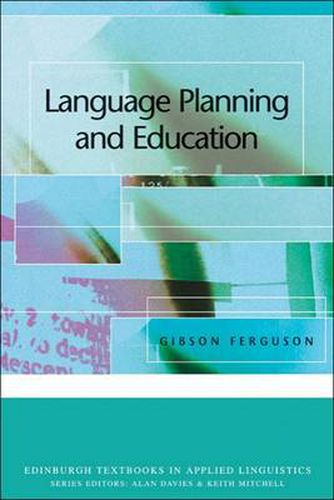Readings Newsletter
Become a Readings Member to make your shopping experience even easier.
Sign in or sign up for free!
You’re not far away from qualifying for FREE standard shipping within Australia
You’ve qualified for FREE standard shipping within Australia
The cart is loading…






Language planning involves systematic intervention in matters of language and language behaviour in efforts to address or solve problems of language in society. This volume is specifically concerned with the domain of education and focuses on problems and issues in language in education world-wide. A general review of the types of activity and processes involved in language planning is followed by a discussion of issues such as: the question of language medium of instruction in education in multilingual societies; the educational implications of the emergence of World Englishes; code-switching in the bilingual/multilingual classroom; the language education of linguistic minority pupils in Europe and North America; and issues in bilingual education. Throughout, reference is made to, and examples are taken from, a range of countries world-wide - from Africa to Asia and from Europe to North America. At the end of each chapter there are exercises and suggestions for further reading. This book should be of interest to those professionally engaged with ELT and language in education, whether as students of applied linguistics or as teachers, testers, teacher educators, curriculum developers or policy makers.
$9.00 standard shipping within Australia
FREE standard shipping within Australia for orders over $100.00
Express & International shipping calculated at checkout
Language planning involves systematic intervention in matters of language and language behaviour in efforts to address or solve problems of language in society. This volume is specifically concerned with the domain of education and focuses on problems and issues in language in education world-wide. A general review of the types of activity and processes involved in language planning is followed by a discussion of issues such as: the question of language medium of instruction in education in multilingual societies; the educational implications of the emergence of World Englishes; code-switching in the bilingual/multilingual classroom; the language education of linguistic minority pupils in Europe and North America; and issues in bilingual education. Throughout, reference is made to, and examples are taken from, a range of countries world-wide - from Africa to Asia and from Europe to North America. At the end of each chapter there are exercises and suggestions for further reading. This book should be of interest to those professionally engaged with ELT and language in education, whether as students of applied linguistics or as teachers, testers, teacher educators, curriculum developers or policy makers.